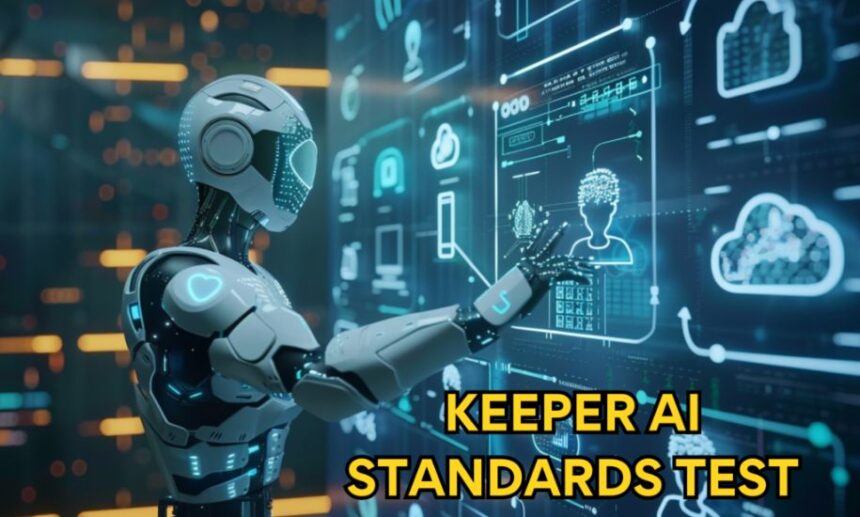In today’s fast-paced industrial world, quality assurance plays a crucial role in maintaining high standards across different sectors. One such innovative tool that has been gaining attention is the “keeper standard test.” This test is a powerful approach that uses artificial intelligence to monitor, evaluate, and ensure product and service quality. At Market Blick, we recognize the importance of understanding such tools, which serve as a reliable foundation for industries to meet the strict benchmarks set for them.
The following article dives deep into what the “keeper standard test” entails, its benefits, applications, and why it stands out in quality assurance. Whether you’re a business owner, an industry professional, or simply curious about advancements in AI-driven standards testing, this guide will give you a thorough understanding of this innovative solution.
What Is the Keeper Standard Test?
The “keeper standard test” is an advanced quality control mechanism powered by artificial intelligence. It ensures that products, services, or processes meet predefined benchmarks consistently. By leveraging AI algorithms, the keeper standard test monitors every stage of production or delivery, providing real-time insights and detecting deviations from standards.
Unlike traditional quality assurance methods that rely heavily on manual checks, the keeper standard test is more precise and efficient. It acts like a vigilant assistant, continuously assessing quality without the risk of human fatigue or error.
At Market Blick, we believe tools like the keeper standard test are essential for industries aiming to maintain competitiveness and trust in their products or services.
Key Features of the Keeper Standard Test
The keeper standard test boasts several advanced features that make it an indispensable tool for quality assurance. Here are some of the highlights:
1. Real-Time Monitoring
The test operates in real-time, ensuring that any discrepancies are flagged immediately. This reduces downtime and prevents defective products from reaching the market.
2. AI-Driven Analysis
Artificial intelligence forms the backbone of the keeper standard test. Its algorithms analyze vast amounts of data quickly, identifying patterns and anomalies with unmatched accuracy.
3. Adaptability Across Industries
The keeper standard test is not limited to a single sector. It can be customized to suit the unique requirements of industries such as manufacturing, healthcare, food processing, and more.
4. Cost-Effective Solution
By automating quality control, the keeper standard test reduces the need for extensive manual checks, lowering operational costs while maintaining high standards.
5. Continuous Improvement
The AI learns over time, improving its ability to detect and address quality issues. This ensures that the keeper standard test evolves with your business needs.
Applications of the Keeper Standard Test
The keeper standard test finds applications in a wide range of industries. Let’s explore some of the areas where this tool is making a significant impact:
1. Manufacturing
In manufacturing, consistency and precision are critical. The keeper standard test ensures that each product meets specifications, reducing waste and enhancing customer satisfaction.
2. Healthcare
In the healthcare sector, quality assurance can be a matter of life and death. The keeper standard test helps maintain high standards in medical equipment and pharmaceutical production.
3. Food Processing
Food safety is a top priority, and the keeper standard test ensures that every batch adheres to strict safety and quality regulations.
4. Software Development
Even in software development, the keeper standard test can be applied to ensure that code quality and functionality meet the required standards.
5. Retail and E-Commerce
For retail and e-commerce businesses, the keeper standard test ensures that products meet customer expectations, boosting brand loyalty and reducing returns.
Benefits of the Keeper Standard Test
The adoption of the keeper standard test comes with a host of benefits that make it a game-changer in quality assurance. Here are some of the key advantages:
1. Enhanced Accuracy
The AI-driven approach ensures a higher level of accuracy compared to manual methods. This reduces the risk of errors and ensures consistency.
2. Time Efficiency
The keeper standard test operates at a speed that is impossible for human inspectors to match. This saves time and speeds up production cycles.
3. Increased Productivity
By automating quality checks, employees can focus on other critical tasks, improving overall productivity.
4. Better Compliance
The keeper standard test ensures compliance with industry regulations, reducing the risk of penalties or recalls.
5. Data-Driven Insights
The test generates detailed reports that provide valuable insights for decision-making and continuous improvement.
How the Keeper Standard Test Stands Out
What sets the keeper standard test apart from other quality assurance methods is its reliance on cutting-edge artificial intelligence. It is not just a tool but a proactive system that evolves with the industry’s needs. Unlike traditional methods, which often react to issues after they occur, the keeper standard test prevents problems from arising in the first place.
At Market Blick, we see the keeper standard test as a transformative solution that aligns with the growing demand for efficiency and reliability in modern industries.
Challenges and Considerations
While the keeper standard test offers numerous benefits, it is essential to consider some challenges as well:
1. Initial Implementation Costs
Adopting the keeper standard test may require an upfront investment in technology and training.
2. Need for Skilled Personnel
Understanding and operating the AI-driven system requires skilled professionals who can interpret the data effectively.
3. Data Security
Since the keeper standard test relies on data, ensuring the security and confidentiality of information is critical.
Despite these challenges, the long-term benefits of the keeper standard test far outweigh the initial hurdles, making it a worthwhile investment for any forward-thinking business.
Conclusion
The “keeper standard test” is revolutionizing the way industries approach quality assurance. With its AI-driven capabilities, it ensures that products and services consistently meet the highest standards. As highlighted by Market Blick, this innovative tool acts like a sharp assistant that never tires, providing businesses with the confidence to deliver excellence.
By embracing the keeper standard test, industries can not only enhance their quality control processes but also gain a competitive edge in today’s demanding market. Whether you’re in manufacturing, healthcare, food processing, or any other sector, this tool can be tailored to meet your unique requirements.







